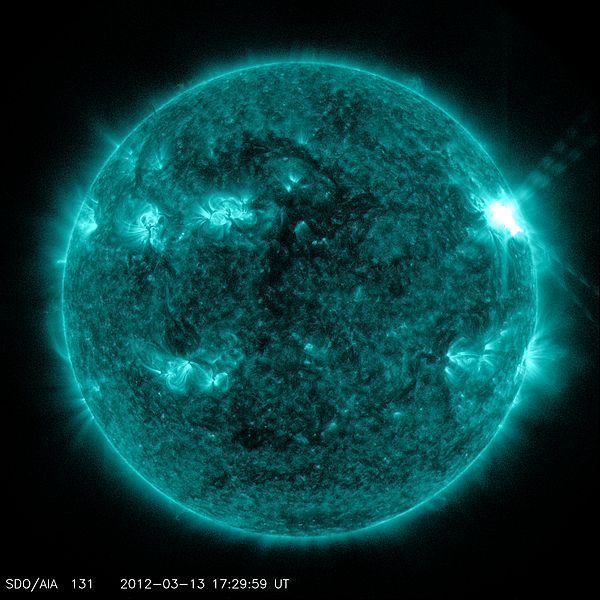Image: Sunspots and Solar Flares

Description: NASA's Solar Dynamics Observatory (SDO) captured this image of an M7.9 class flare on March 13, 2012 at 1:29 p.m. EDT. It is shown here in the 131 Angstrom wavelength, a wavelength particularly good for seeing solar flares and a wavelength that is typically colorized in teal. The flare peaked at 1:41 p.m. EDT. It was from the same active region, No. 1429, that produced flares and coronal mass ejections the entire week. The region has been moving across the face of the sun since March 2, and will soon rotate out of Earth view. A solar flare is an intense burst of radiation coming from the release of magnetic energy associated with sunspots. Flares are our solar system’s largest explosive events. They are seen as bright areas on the sun and last from mere minutes to several hours. Scientists classify solar flares according to their x-ray brightness. There are 3 categories: X-, M- and C-class. X-class flares are the largest of these events. M-class flares are medium-sized; they can cause brief radio blackouts that affect Earth's polar regions. Compared to X- and M-class, C-class flares are small with few noticeable consequences on Earth. Image Credit: NASA
Title: Sunspots and Solar Flares
Credit: http://www.nasa.gov/multimedia/imagegallery/image_feature_2201.html
Author: NASA
Usage Terms: Public domain
License: Public domain
Attribution Required?: No
Image usage
The following page links to this image:

